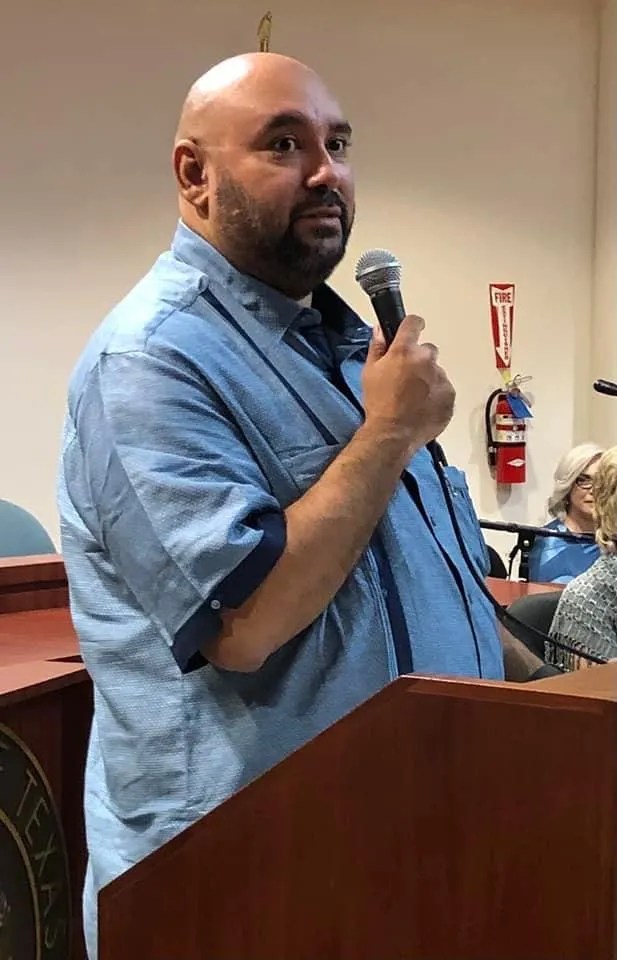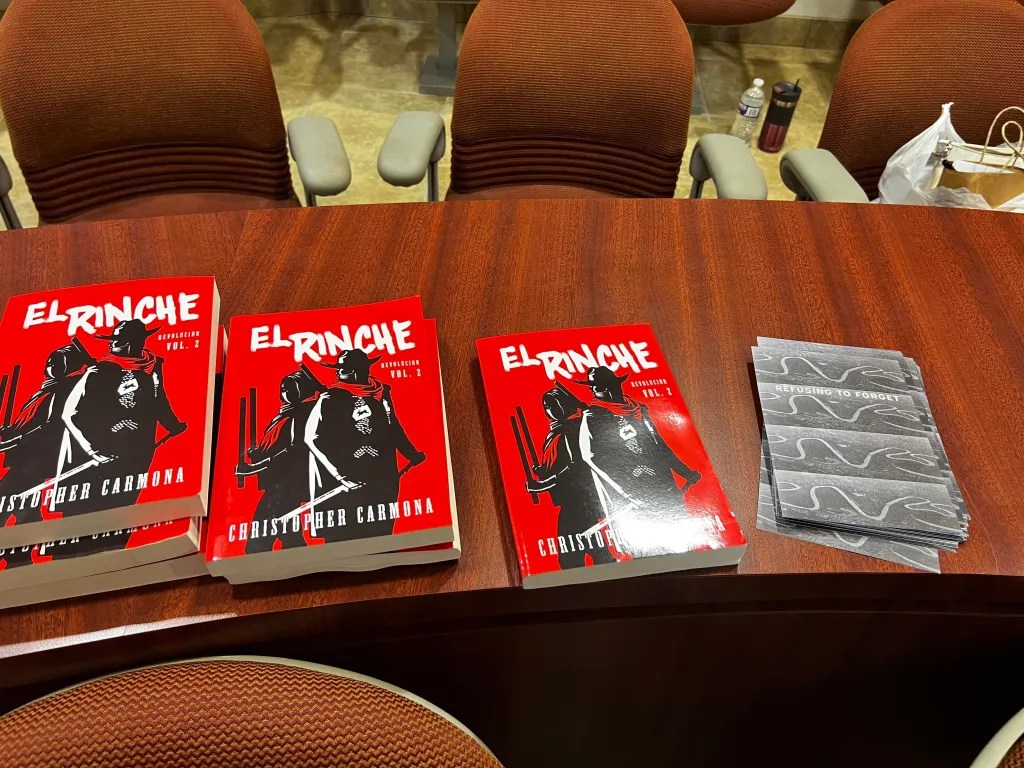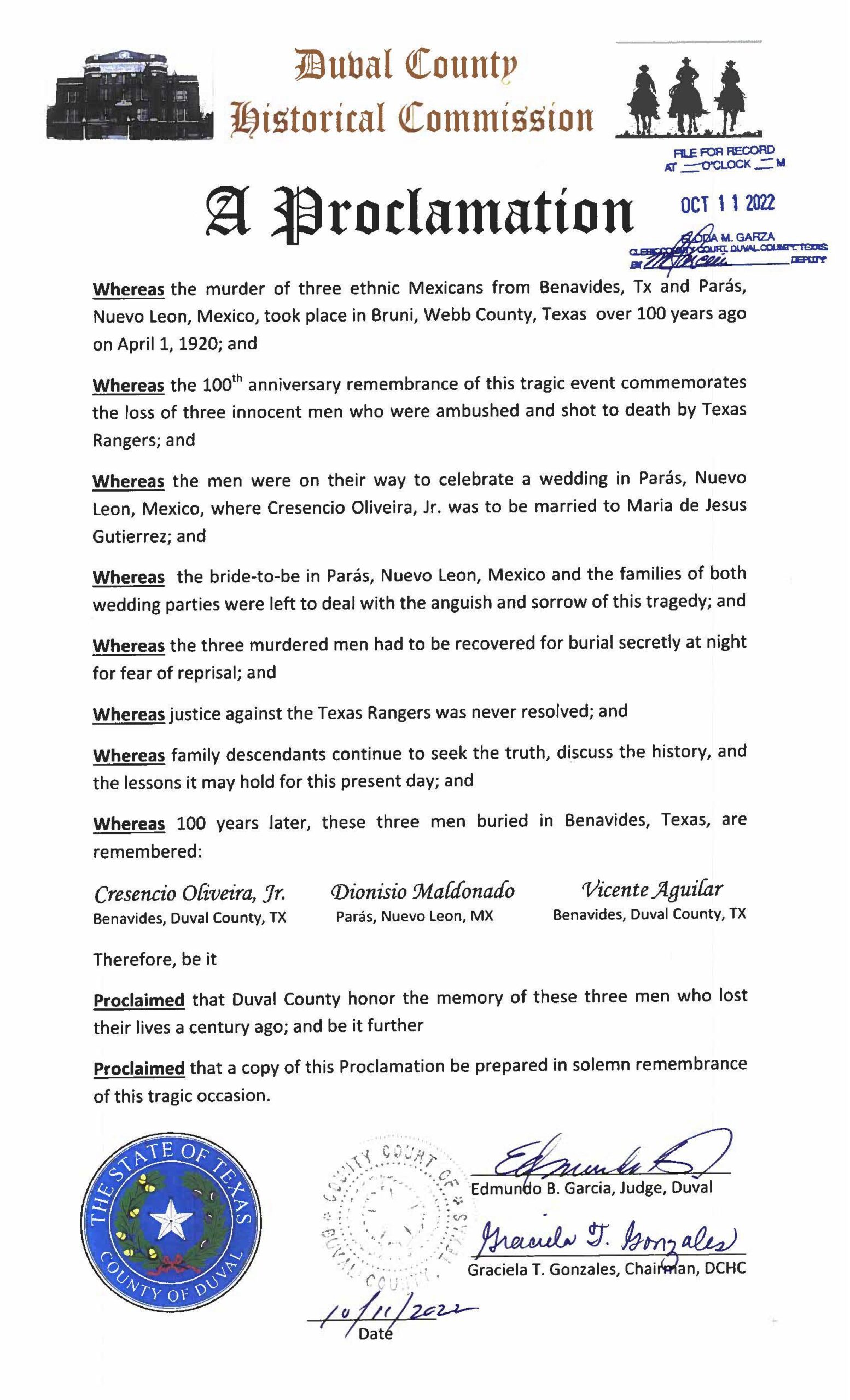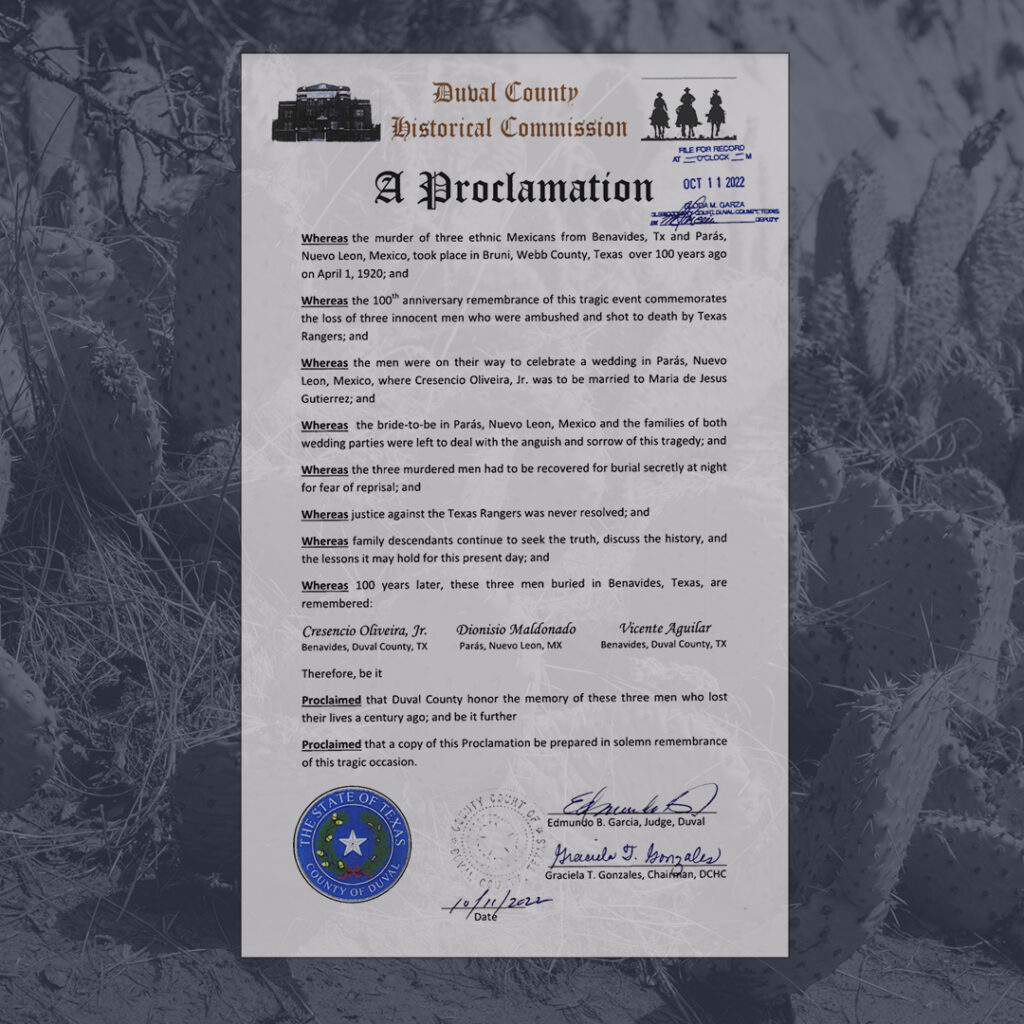By Christopher Carmona
“The families who have reckoned with this violence harbor a lesson we should all
heed: We must reckon with the fact that the southern border of our country was
created and policed violently, and not valiantly; and that we have continually
suppressed this truer and more accurate past. It is a past that bleeds into the
present – a suppression that continues to shape our future.”
The Injustice Never Leaves You ~ Dr. Monica M. Martinez
On Saturday, October 15th, 2022, I drove two hours from my home in San Antonio to speak at the commemoration of three men that were murdered by Texas Rangers in Duval County on April 1, 1920. This incident has left a wound for the South Texas Community of Duval County for over a hundred years. The three men who were murdered were Cresencio Oliveira Jr., Dionisio Maldonado and Vicente Aguilar. They traveled with two other men Cresencio Sr. and his brother, Doroteo were lucky enough to escape the encounter with their lives. All these men were prominent figures in Duval County and were heading to a wedding in Parás, Nuevo Leon, Mexico. It was to be the marriage of Cresencio Oliveira Jr. to Maria de Jesus “Chucha” Gutierrez, but Cresencio would never make it. These men were ambushed by a contingent of Texas Rangers out of Laredo. The Rangers waited until the men stopped to water their horses at a communal corral trafficked by many on their way south to Mexico.
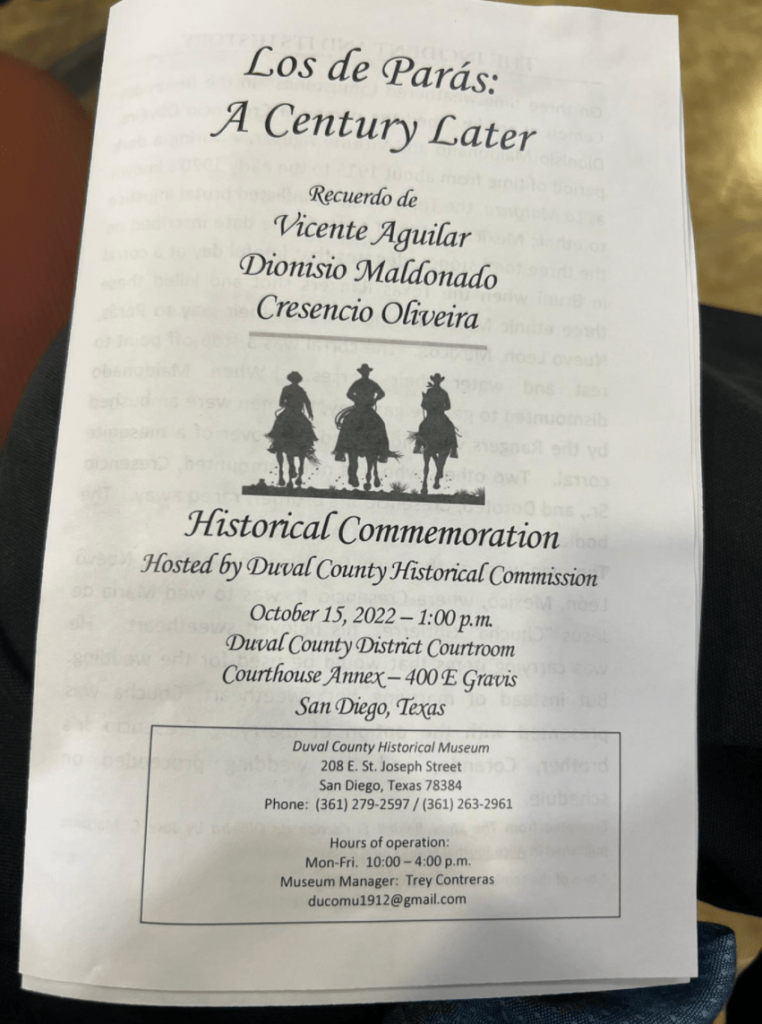
The official Texas Ranger report called these men “bootleggers” and reported that the “bandits” opened fire on them, and they returned fire. None of the Texas Rangers were injured in this attack. As was customary at the time, the Texas Rangers left the bodies of these three men where they were shot and did not allow anyone to collect the bodies, leaving them for the vultures. Unfortunately attacks like these were not uncommon and bodies of ethnic Mexicans were often not allowed to be buried during the time known as La Matanza.
La Matanza was a time from approximately 1910-1920 in South Texas where many ethnic Mexicans, people of color, and sympathizers were lynched, murdered and terrorized off their lands in the name of American Progressivism. These atrocities were perpetrated by the Texas Rangers [los rinches], vigilantes, and other law enforcement. During this time, it is estimated that hundreds to thousands lost their lives and property at the hands of American corporate interests, Anglo ranchers, but specifically the Texas Rangers. These acts of terrorism left a community of people in a climate of fear for decades to come. One of the many atrocities that los rinches committed were not allowing the families of the victims to bury their dead.
Fortunately, the families would come with the cover of night and collect the bodies. The three men would be buried in the Benavides Cemetery in Benavides, Texas. It is impossible to relay how devastating these murders were to the families who were still grieving the loss of these men one hundred years later.
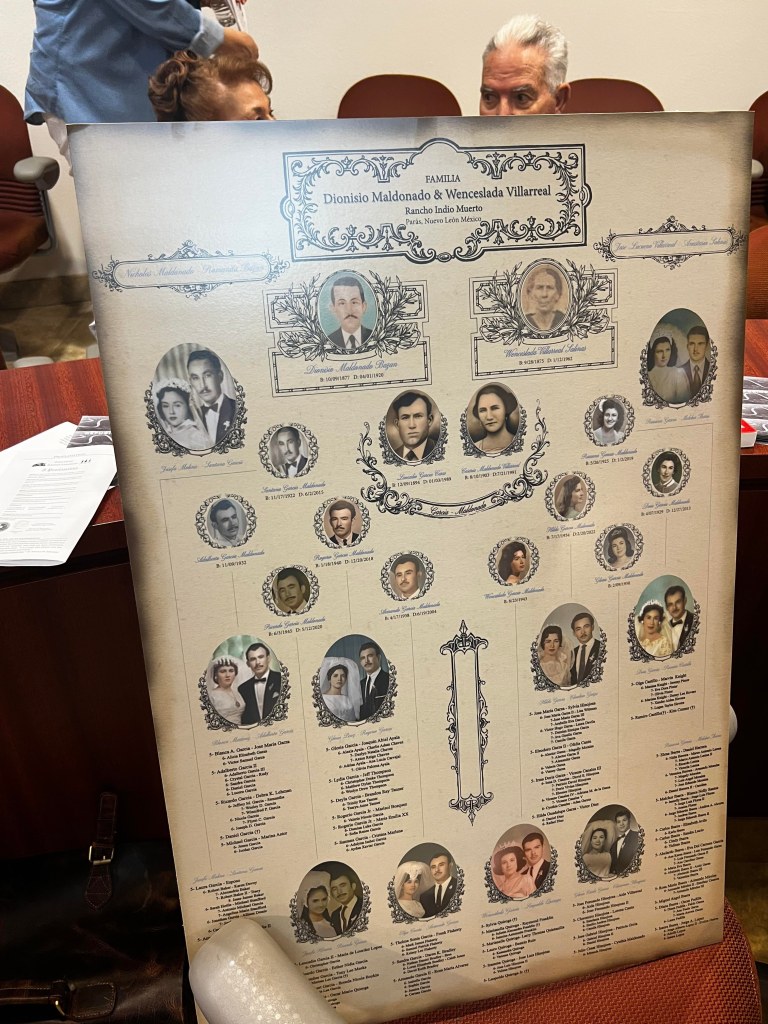
“Restorative Justice is respect. Respect for all, even those who are different from us; even those who seem to be our enemies. Respect reminds us of our interconnectedness, but also of our differences. Respect insists we balance concerns for all parties. If we pursue justice as respect, we will do justice restoratively.”
— Howard Zehr
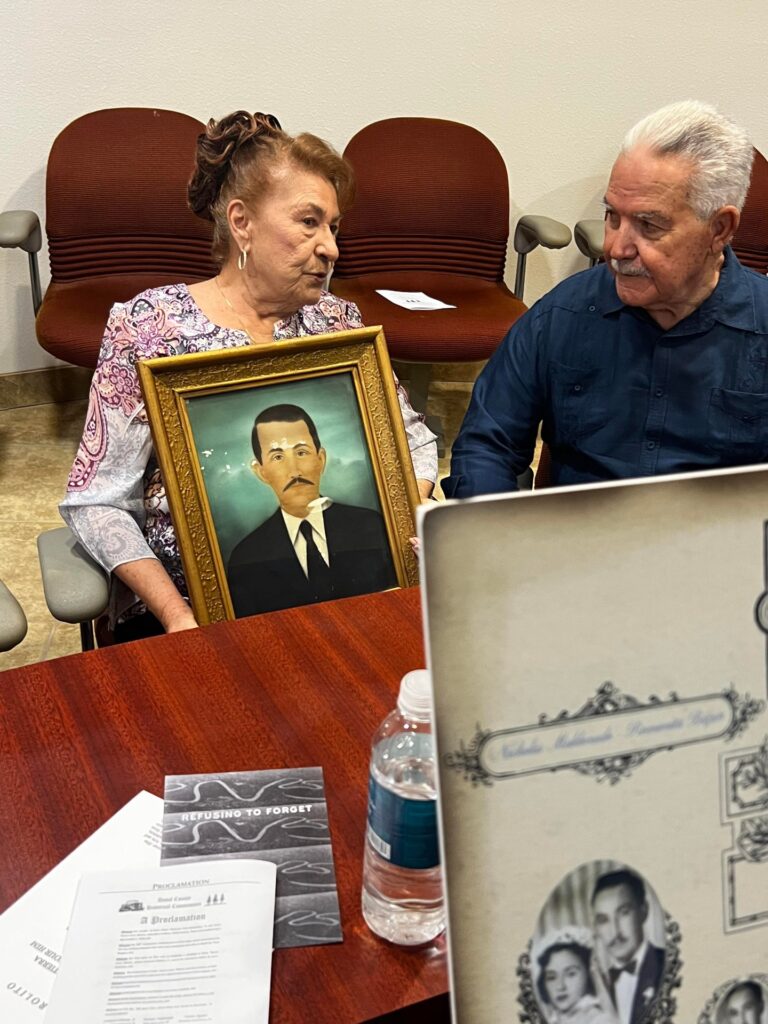
When I drove up to the county courthouse, I did not imagine the impact that these particular murders still had on the community. The event was held in the county commissioners court and the room was filled with the descendants of all three families. There were over 200 people from all over the country and even Mexico that turned up to see Duval County acknowledge the murders of Cresencio Oliveira Jr., Dionisio Maldonado and Vicente Aguilar. The granddaughter of Dionisio Maldonado even brought a portrait of her grandfather and held it in her lap the entire time. Three photographs of the men’s graves were front and center in the middle of the court with three white candles waiting to be lit by the three respective granddaughters from each family.
The day was also filled with two different musical groups that performed the corrido written about the incident and one group, in particular, Joe and Rosa Perez even restored a verse that told the story from the widow’s point of view. As they sang the corrido for the families, gritos and sobs could be heard from the crowd. The mayor of Parás, Nuevo Leon, Mexico, Ana Iza Oliveira, a direct descendent of Cresencio Oliveira also spoke about the impact of the incident on the town of Parás and offered a recognition from her government that these men were not just prominent figures in South Texas but Mexico as well. As I listened to the various testimonios by the families and the descendants, many from the Rio Grande Valley, I felt the effects of these acts of acknowledgement as restorative justice and collective healing for a community that has for so long been denied justice. One of Olivereira’s descendants came all the way from San Diego, California and said, “Yo soy Mexicano, yo so Tejano, yo so Chicano. Presente.” And we all responded with each man’s name and “Presente.”
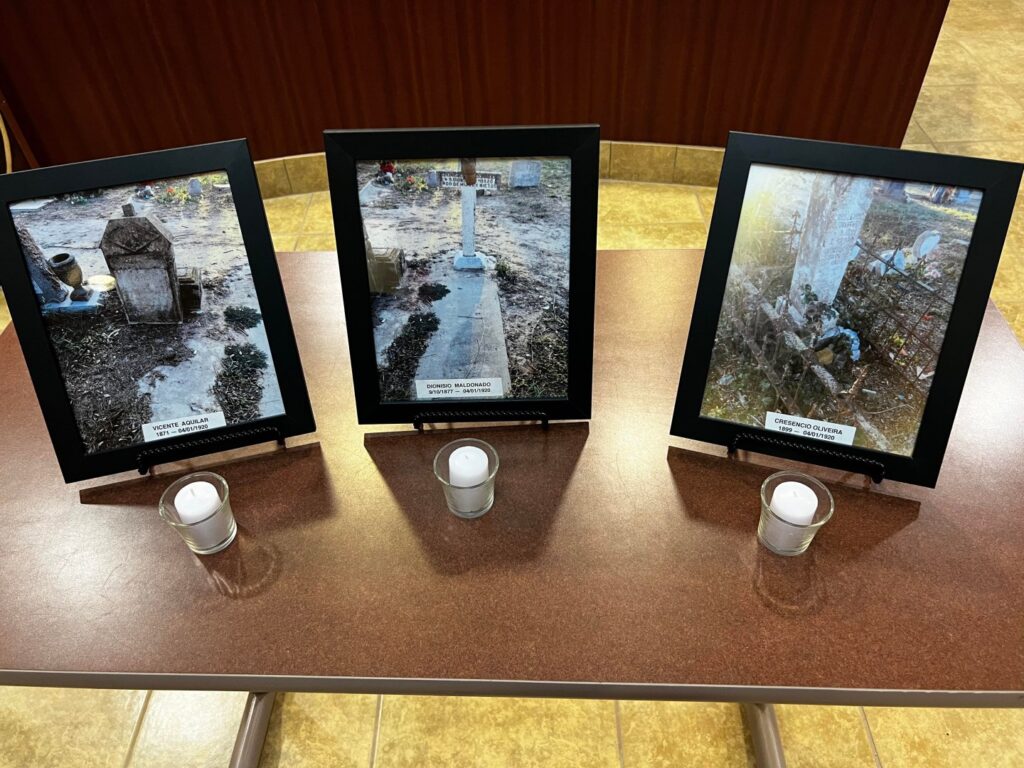
One of the most memorable moments of the event for me was when I finished speaking on the history of the Matanza and the Texas Rangers and the need for more acknowledgement of these acts, I sat down next to the grandson of Cresenscio Oliviera, Jr. and he simply patted me on the shoulder, and I could see a tear in his eye forming. At the end of the ceremony, the County Judge presented a proclamation to the three granddaughters of the murdered men, all in the late eighties, with a proclamation from the county acknowledging the murders by the Texas Rangers and setting the record straight about what actually occurred on that April night. They then lit the candles and wept.

